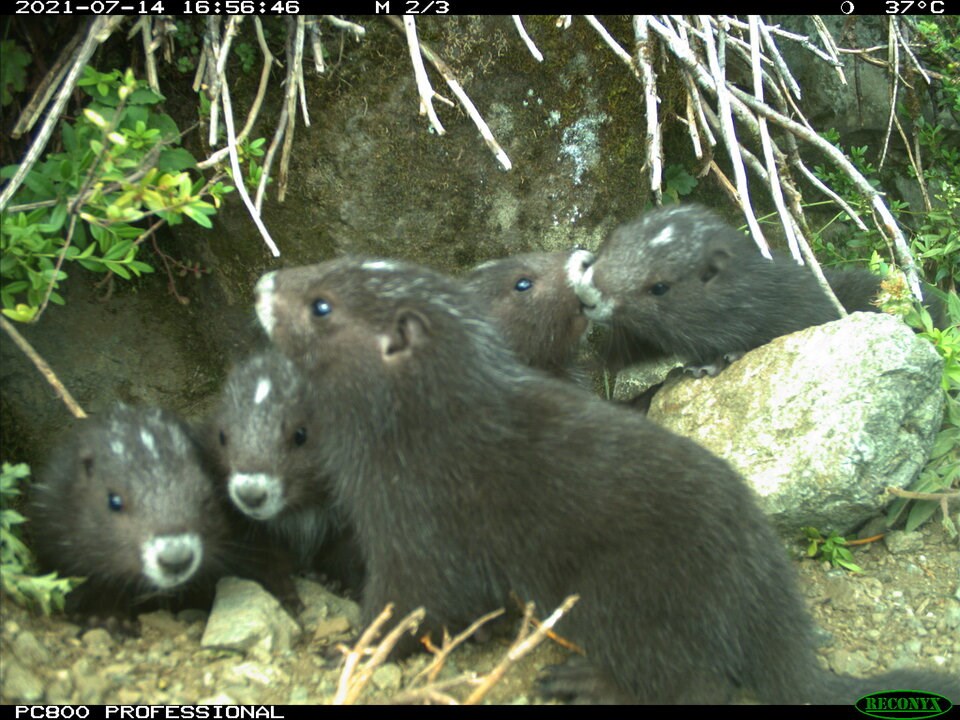The endangered Vancouver Island marmot population has received a significant boost after 14 pups were born at a breeding centre in Alberta.
The Wilder Institute, housed at the Calgary Zoo, is one of three Canadian organizations that breeds and reintroduces the endangered rodent.
“It's certainly a celebration,” said Caitlin Slade, the program’s manager of animal care.
“They are Canada's most endangered mammal and have been for years and years and years.”
From spring to fall, the unique marmot forages in the alpine and subalpine meadows of Vancouver Island. Come winter, they hibernate in burrows deep below the frost line in soils, boulders or tree roots.
But by the 1990s, logging and other human activities had reduced the population to roughly 70 animals. In 1998, the Wilder Institute began its breeding program alongside the Toronto Zoo and the Tony Barrett Mt. Washington Marmot Recovery Centre.
Within five years the wild marmot population had sunk to 30 — making it one of the most endangered animals in the world. The three breeding programs have since released 576 animals into Vancouver Island colonies. Climate and predators have eaten into that population, so that by 2023, those living in the wild are estimated to number around 200.
New burrows leads to successful mating season
This season came with added uncertainties for the Calgary breeding program: the institute moved to a new facility, and Slade said uprooting the animals raised anxiety among animal handlers that the marmots might feel uncomfortable in their new home.
The new enclosure also offered some benefits, including a thick layer of soil for the marmots to burrow and give birth. Pairing the would-be marmot parents requires moving them when they are in deep hibernation — a state of such profound sleep, it makes it difficult to determine whether they are alive or dead, says Slade.
That’s when the animal handlers take the females and set them down next to the males. When they wake up, their old partner is gone and their new partner is already there. According to Slade, they don’t seem to notice.
A month or two later, the pups are born. This year was a little different. Because the marmot parents can burrow in their new enclosure, staff at the institute couldn’t see how many pups had been born until they emerged.
“That is why we haven't been able to get very good pictures of them yet because they're just popping their little heads out and then disappearing,” Slade said.
All things considered, the 14 new pups represent a successful year at the Calgary facility.
Their success comes amid another cycle of reintroduction. Last weekend, 52 captive-bred marmots were slated for release into existing colonies on Vancouver Island. How many of the Calgary-born pups will join them has not yet been decided.
Based on genetics, some might be kept at one of the three institutes for further breeding. Those that make the trip to Vancouver Island for release into the wild will be tucked into carts with enough rabbit pellets, romaine lettuce and carrots to see them through the entire 1,200-kilometre journey.
A tough summer ahead
Over the past two seasons, swings in extreme weather has put serious pressure on the Vancouver Island marmots already in the wild. In 2022, an estimated 50 animals died as a result of a late snow that fell on existing colonies scattered across the Strathcona Provincial Park, Mount Washington and Nanaimo Lakes regions.
This year, Environment Canada forecasts above-average temperatures for most of Canada, and in B.C., the River Forecast Centre has predicted an “outlier” drought year so extreme river water deficits have no historical comparison.
“If there’s no moisture to sustain plants and food sources, it will be a tough year for them,” said Adam Taylor of the Marmot Recovery Foundation.
“It’s sort of like the only watering hole in Africa … where there’s a source for food, the [marmots] will go there and it will attract predators.”
Historically, marmots have acted as a source of food for prey species like golden eagles, wolves and cougars. Marmots themselves emerge from their dens and hiding places to track down the sugar-laden lupin plant, their preferred food.
Taylor said drought could make foraging more difficult. Human influences spreading into the previous wild spaces would only add pressures on the small mammal, added Slade. If the breeding facilities were to close, she said the Vancouver Island marmot population would almost certainly go extinct.
“It is a numbers game,” Slade said.
With files from Darron Kloster





